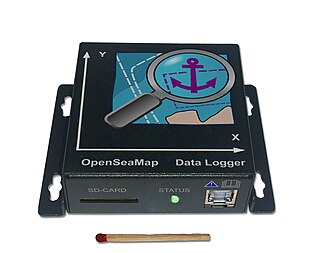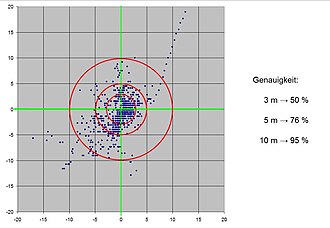h:En:Metadata help
| Deutsch | English |
|---|
| Water depth |
|---|
| Depth-Website |
| The project |
| Measuring strategy |
| Upload NMEA-data |
| Metadata help |
| Connecting NMEA-Logger |
| Hardware Logger |
| Software Logger |
| Mobile sounder |
| Ship network |
| Data formats |
Translated by Deepl - please check the result:
Dear data donor,
In order to evaluate your data correctly, we need precise information about the measuring system.
The more detailed you can enter the information, the more accurate we can evaluate your depth data.
If you don't know something, you can add it later.
But before you enter your ship in the metadata form, it is recommended to write down all relevant ship data on board with the data entry sheet (Datei:Vessel info en 2.pdf) in your hand, so that you don't have to stop in the middle if you are missing any information.
The metadata form has five tabs:
Track
- Coast
- For tracks in the coastal area there is nothing to enter here.
- Tide differences are calculated automatically.
- Inland
- For lakes, rivers, inland waterways we need for each track
- the river level belonging to each track: name and current level height
- and for lakes the current water level at the corresponding gauge.
- Since OpenSeaMap is an international project, and since countries use different elevation reference systems,
we of course need the exact name of the corresponding elevation reference system. - Without this information we cannot evaluate the data.
Logger
There are several devices that can be used to log water depths.
These have different properties that can affect the logged data.
For example, the OpenSeaMap hardware logger can also record attitude and acceleration data.
Some loggers and programs can add their own timestamp to the data from the various sensors.
But there are also loggers that filter or otherwise alter the data in unfavorable ways.
And sometimes this varies from version to version.
Please specify here, which logger or plotter you use for data logging
and which software version is installed on the device.
Ship
Your ship is the "measuring platform" on which the measuring devices and sensors are mounted.
Shape, dimensions, sailing characteristics, sensor positions etc. influence the measurement result.
Please state everything you know. If you do not know something, you can add it later.
The more accurate your information, the more reliable the results.
About the ship type, we can perhaps later ship-specific deviations.
Flag, MMSI, call sign we need to distinguish the ships.
If you use multiple ships, you can create a separate metadata form for each ship.
Then you can later simply select from the list of your ships the one you are currently using.
The position of the GPS antenna and the echo sounder sensor are usually different.
Therefore, the position measured by the GPS does not match the depth indication of the echosounder.
To correct this, we need the exact masses where the antenna and sensor are mounted.
We also need the depth of the depth sounder sensor below the waterline, and the height of the GPS antenna above the waterline.
GPS
Simple GPS units are installed on recreational boats. Depending on the built-in GPS chip, software and antenna, the accuracy of the position is from 2 to 20 meters. But there are also professional devices, with which a position can be determined to a few centimeters.
To be able to judge the logged position better, we ask for manufacturer and type of the devices.
If you have more than one GPS device connected, please specify the most accurate device in the metadata.
The used antenna has an influence on the accuracy of the position.
We would like to investigate this in more detail.
Therefore, we ask about the antenna.
The altitude output from the GPS on pleasure boats is only accurate to about 20 to 40 m, and therefore probably rather useless. Professional devices, on the other hand, can determine the altitude to within a few cm, and are therefore suitable for determining the exact height of the water level, and can also be used to determine wave and tide.
Where professional data overlaps with recreational boat data, perhaps recreational boat data can be calibrated using the professional.
Therefore, we ask for the antenna height.
Sounder
Echo sounders differ in many parameters. Therefore, the metadata is crucial for the evaluation of the recorded data.
We ask about manufacturer and type of the devices.
The higher the frequency, the better the target separation (resolution).
The lower the frequency, the further the range in depth (attenuation).
Common frequencies are: 220, 200, 192, 50, 38 kHz
The angle of beam spread depends on the transmission frequency and the size and shape of the sensor. In the sensor is a flat, usually cylindrical crystal. The usable frequency depends on the thickness of the crystal. The encoder angle depends on the diameter. A 192 kHz / 20° encoder crystal has a diameter of about 2.5 cm, while an 8° encoder crystal has a diameter of about 5 cm. The larger the crystal, the smaller the encoder angle is.
A small opening angle creates a small "footprint" on the seabed, so measures more accurately. However, heeling or incorrect mounting will falsify the result more than an eber with a larger aperture angle.
Therefore, we ask for the frequency used and the aperture angle of the sound cone.
Depending on the mounting location of the sensor, disturbances can be caused by air bubbles.
Echosounder transducers on sailing ships are often installed in front of the keel and slightly offset to the side. Due to the shape of the hull, the installation hole is then not always exactly perpendicular, but often at right angles to the hull. This can be corrected somewhat when installing the depth gauge, but this correction is not always made. Then the depth gauge does not measure exactly vertically downwards. There is a laterally inclined radiation to bb or stb and thus a systematic measurement error.
Therefore we ask for the mounting location and mounting angle.
User
To be able to contact you for further inquiries, we need your email address.
If you like, you can also enter your phone number.
With your home country we know where the data donors come from.
Perhaps we will be able to offer a small newsletter for the data donors, with success reports, ideas for improvement, innovations. A forum is also planned.
Background information
- Accuracy of GPS data
- Check accuracy of GPS device
- Accuracy of coordinates
- Reliability of OSM coordinates
- Function of the echosounder (video german)
FAQ
I have changed a device (e.g. new GPS or echosounder installed) - what should I do?
- Fill in a new metadata form.
- Everything stays the same, but add a number after the vessel name, example: "Albatros" becomes "Albatros-1".
- And of course you have to change the data of the new device accordingly.
- If you would only change the device, we would not know when evaluating the data that this only applies to new data, and with improved evaluation at a later time, we would evaluate the old data as if they had also been recorded with the new device - and thus we would generate wrong data.
- Since on most ships the devices are not changed for years, this procedure is the easiest.
I have 2 GPS devices connected - where should I enter the second one?
- Enter the device with the more accurate positioning in the form.
- Write in the comment how the device is named in the NMEA dataset (so that we evaluate the correct device).


